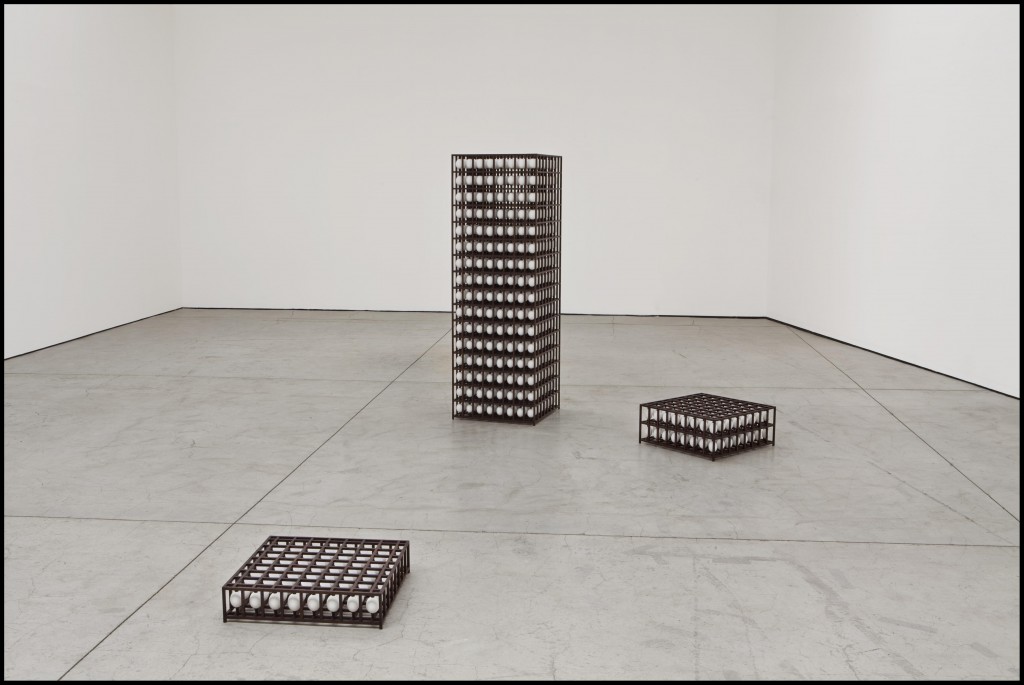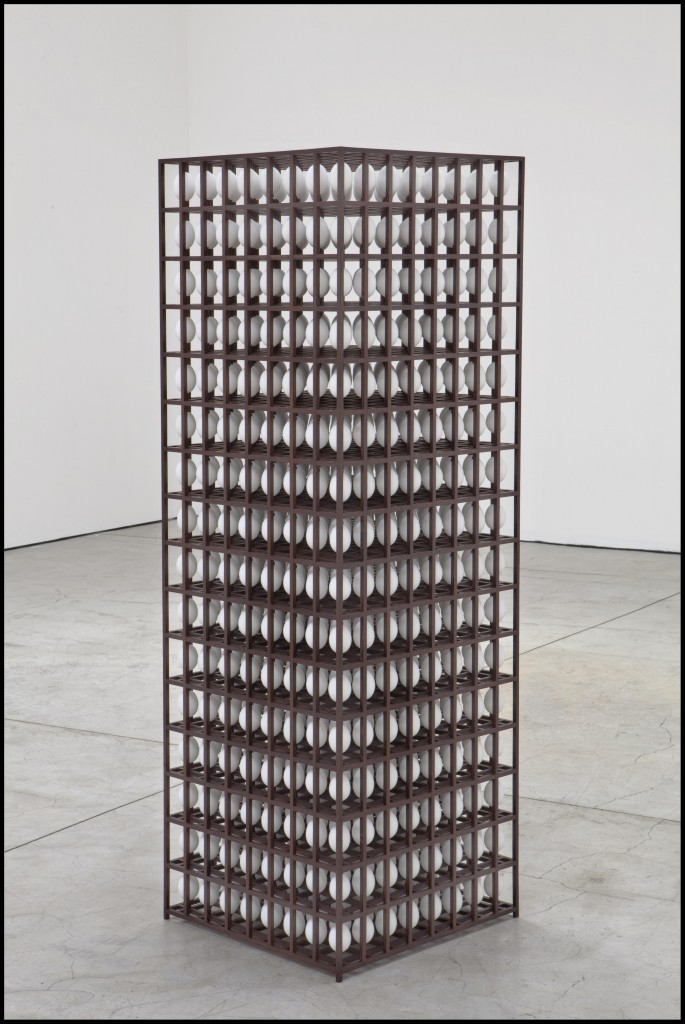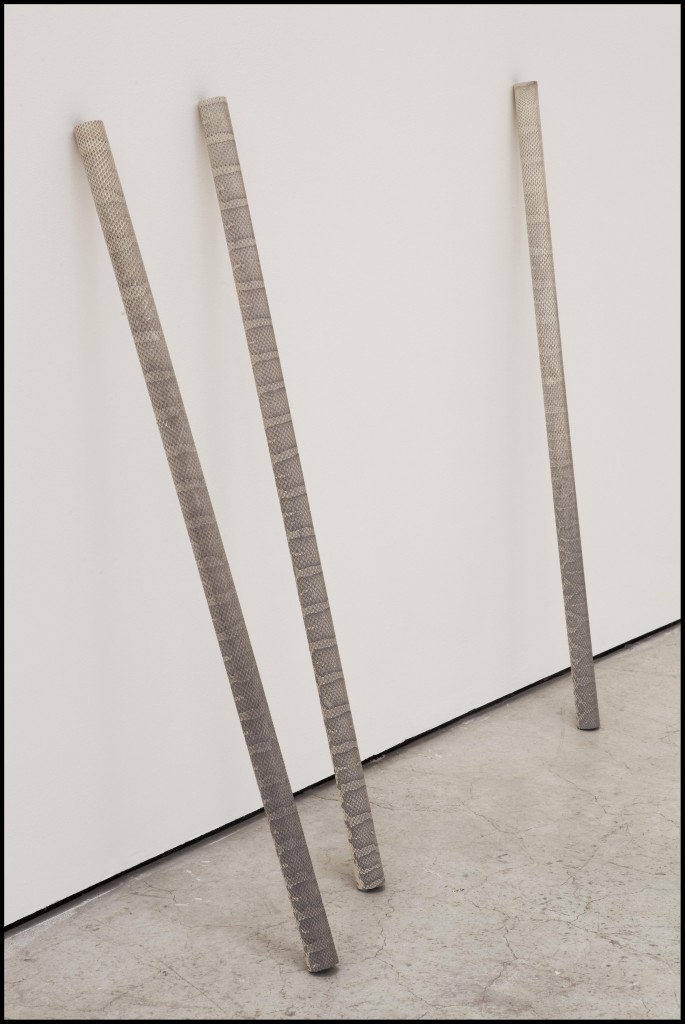


21st June– 3rd August 2013 2 Omega Place London N1 9DR
Alastair Mackie’s practice is one based on transforming that which is left over after nature has completed its cycles of construction, destruction and reintegration. Deploying the minimalist strategies of series and repetition, he constructs sculptures which occupy the space between the natural and the manufactured, utilising multiple uniform elements to build complex structures.
The grid, the foundation of modernism since the 1960s, was crucial to the rejection of illusionistic space which tied painting and sculpture to the past; theorised in Rosalind Krauss’s seminal essay in 1979, she states ‘the grid is what art looks like when it turns its back on nature’. Mackie has ‘written back’ to this reading of the grid by reinvesting it with the very nature it has rejected. The artist inflects the severe artificiality of the grid through the prism of natural elements.
In the installation comprising The Well, Loudspeaker and Splinter – (all 2013), the carefully crafted lattice works of dark wood focus the viewer’s attention on the natural geometry of the eggs, each heightening the other’s innate qualities. The confrontation of the natural form of the eggs with the architectonic one of the ‘cage’, the curvilinear with the linear, dark with light, point up the differences, but also the similarities between the natural and the man-made world. The more closely one examines the world the less ‘natural’ it becomes, the structures of biology and geology are in fact guided by rigorous mathematical formulae and principles of physics; the perfect honeycomb of a beehive; the octagonal tessellation of the Giant’s Causeway in Ireland; the delicate geometry of snowflakes; and at a deeper sub-atomic level everything in the universe is fundamentally an expression of pure mathematical laws.
In Complex System (series x 4) (2013), cuttlefish bones are cut to conform to their underlying geometry of elongated hexagonals and assembled to form a perfect minimalist work in minutely varying shades of white, obliquely referencing Robert Ryman’s ‘white’ monochrome paintings of the 1960s. The growth rings function like naturally generated ‘brush marks’. The substance of the sea creatures has been transformed into a perfect artefact of twenty-first century conceptual minimalist art.
In Untitled (Snakeskin, 2013), another animal bi-product has been given a new ‘life’, the tanned skin has been veneered to a metal tube, echoing the morphology of its former host, it leans stiffly against the gallery wall, a startling juxtaposition of the natural and the artificial which formerly connects to the minimalist tradition of work which eschews the plinth or the floor to lean against the gallery wall, such as John McCracken’s Flare, (1980) or Tom Friedman’s Two by Four, (1990). Mackie’s disturbingly potent objects allow the natural strangeness of his reconfigured biological materials to precisely express the uncanny aspect of nature, using hand-craft techniques to intervene in the original object just enough to release the innate unease at the heart of our relationship to the natural world.
Richard Dyer © 2013
Richard Dyer is an Editor at Third Text art magazine and a widely published art critic.





